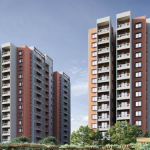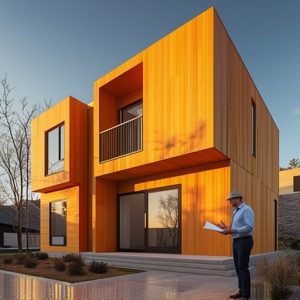
Modern building performance depends on multiple factors, but the widespread adoption of advanced construction panels has significantly changed how efficiency and sustainability are achieved. These panels are engineered to optimize insulation, improve structural integrity, and streamline installation, making them a cornerstone of contemporary construction strategies. According to the U.S. Department of Energy, buildings account for 40% of total energy consumption, and construction panels can reduce energy use by up to 30% through enhanced insulation.
Advanced Materials for Enhanced Efficiency
Today’s construction panels incorporate cutting-edge materials that improve both thermal and acoustic performance. Panels made from expanded polystyrene (EPS), mineral wool, and polyurethane foam deliver superior insulation values. These materials reduce heat transfer, which lowers energy consumption and contributes to sustainability goals. For example, polyurethane foam panels can achieve R-values of up to 7.0 per inch, significantly reducing HVAC loads.
Acoustic Performance and Occupant Comfort
Acoustic insulation is another area where construction panels deliver significant value. In urban settings or multi-family dwellings, soundproofing is critical to comfort. Panels that incorporate high-density cores or laminated barriers help control noise transmission between rooms and from the external environment, improving indoor quality of life. Noise reduction coefficients (NRC) of 0.7 or higher are commonly achieved with advanced panel systems.
Durability and Strength for Long-Term Performance
Beyond insulation and acoustics, construction panels are engineered for durability. Many panels are tested for impact resistance, structural strength, and weatherproof performance. Materials such as fiber cement, oriented strand board (OSB), and high-performance composites enhance a panel’s ability to withstand harsh environmental conditions while maintaining their structural integrity over time. For instance, OSB can provide shear strength ratings up to 230 pounds per panel.
The strength of these panels allows them to serve as load-bearing elements in modular and prefabricated systems. This reduces the need for traditional framing and speeds up construction timelines. Integrated materials like lumber, rebar, and beams play a crucial role in achieving structural resilience while minimizing material waste.
Innovations in Panel Technology and Design
The evolution of construction panels is closely tied to technological innovation. Manufacturers are now producing panels with integrated systems, such as embedded wiring channels, vapor barriers, and smart sensors. These innovations allow for more streamlined installation and better integration with building automation systems.
Prefabricated and modular panels are increasingly popular due to their consistent quality and ease of on-site assembly. Modular wall panels, for instance, come pre-finished and cut to exact specifications, reducing waste and labor requirements. This shift supports a faster, more cost-effective construction process. These panels often incorporate elements like pipes, nails, and screws that facilitate faster installation.
Installation Efficiencies and Cost Advantages
Installation speed is one of the key advantages of using modern construction panels. Because these panels are manufactured under controlled conditions and arrive on-site ready for placement, they significantly reduce labor hours and the potential for installation errors. Studies show that using prefabricated panels can cut construction time by up to 50%.
Cost benefits are realized not only through reduced labor but also through minimized material waste and quicker project turnaround. Additionally, their long-term energy savings contribute to reduced operational expenses, making panels a sound investment for builders and owners alike. Incorporating materials like cement, sand, gravel, and asphalt ensures durability without compromising efficiency.
Sustainability and Eco-Friendly Practices
Sustainability is at the heart of many current construction practices, and panels contribute substantially to eco-friendly building. Many panel systems use recycled materials, are recyclable themselves, or support reduced environmental impact through better energy conservation.
Green certifications such as LEED often recognize projects that incorporate high-performance, energy-efficient construction panels. With reduced embodied carbon and enhanced building lifecycle performance, these panels support sustainable building mandates and regulatory requirements. Use of recyclable materials like aluminum, copper, and glass further enhances their eco-friendly profile.
Fire-Resistance and Weatherproof Qualities
Safety and resilience are essential attributes of any construction material. Many advanced panels offer fire-resistant cores or are treated with fire-retardant coatings. This helps in meeting building codes and protecting occupants in case of emergencies. According to fire safety guidelines, panels must often withstand temperatures exceeding 1,100°F for up to two hours.
Weatherproof capabilities are also vital. Panels designed with integrated barriers prevent water infiltration, resist mold growth, and withstand wind loads. These qualities extend the service life of a building and reduce the frequency of repairs. Proper sealing with mortar and compatible materials ensures long-term resistance to environmental stressors.
Versatility in Application Across Building Types
Whether used in commercial office complexes, residential housing, or industrial facilities, construction panels adapt to varied architectural and functional demands. Wall panels, ceiling panels, and floor systems can all be customized to match aesthetic and performance requirements.
Load-bearing panels are especially effective in applications where traditional structural framing would be cost-prohibitive or time-intensive. In such cases, they offer both structural support and finishing surfaces in a single element. These versatile panels integrate seamlessly with diverse building materials, making them indispensable in modern construction.
Conclusion: A Holistic Approach to Building Performance
Construction panels represent a transformative approach to enhancing building performance. By addressing key performance areas such as thermal efficiency, acoustic control, structural durability, and sustainability, they provide a multidimensional solution for today’s complex building demands.
As technology continues to advance, so too will the capabilities of panel systems. Their continued evolution ensures that construction professionals can meet higher standards of design, function, and environmental responsibility without compromising cost or efficiency.
For stakeholders focused on delivering high-performance, eco-friendly, and cost-effective buildings, construction panels offer a proven path forward.








